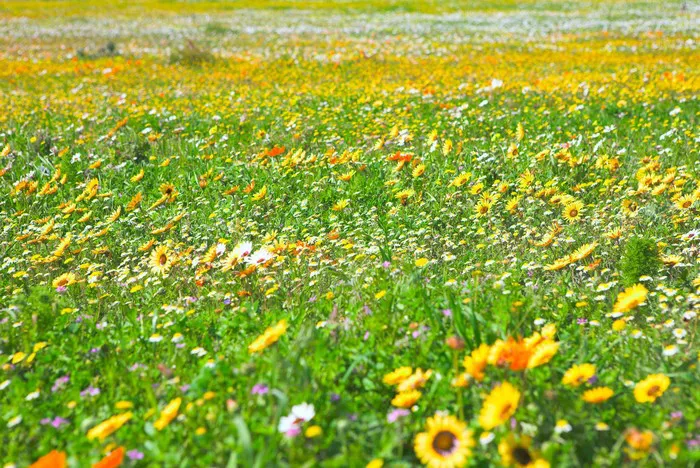Wildflowers, with their delicate beauty and ephemeral presence, have long captured the imagination of writers and poets. These humble blooms, often overlooked in the bustling landscapes they inhabit, hold profound symbolic significance in literature. From representing themes of innocence and purity to embodying the transient nature of life itself, wildflowers serve as powerful metaphors that enrich the tapestry of literary works across cultures and epochs.
Origins of Wildflower Symbolism
The association of wildflowers with symbolic meaning predates written literature, rooted in ancient cultural beliefs and folklore. In many traditions, wildflowers were imbued with spiritual significance, believed to possess magical properties or divine blessings. For instance, in ancient Greek mythology, the narcissus flower symbolized vanity and self-love, stemming from the tale of Narcissus who fell in love with his own reflection. Similarly, the lotus flower held profound symbolism in Eastern cultures, representing purity, enlightenment, and rebirth.
Wildflowers as Symbols of Nature’s Bounty and Beauty
One of the most prevalent themes associated with wildflowers in literature is their portrayal as symbols of nature’s abundance and beauty. Authors often use wildflowers to evoke scenes of pastoral tranquility and to celebrate the richness of the natural world. In William Wordsworth’s poetry, for example, wildflowers frequently appear as vibrant elements of the landscape, symbolizing the harmony between humanity and nature. Wordsworth’s famous poem “I Wandered Lonely as a Cloud” immortalizes the image of “a host of golden daffodils” dancing beside a lake, capturing the awe-inspiring beauty of nature’s bounty.
Wildflowers as Symbols of Innocence and Purity
The delicate and unassuming nature of wildflowers often aligns them with themes of innocence and purity in literature. Their ephemeral blooms and unspoiled beauty evoke notions of purity untouched by the complexities of the world. In Harper Lee’s “To Kill a Mockingbird,” the character of Boo Radley leaves gifts for the children, including a bouquet of wildflowers placed in the knothole of a tree. These wildflowers symbolize Boo’s innocence and his desire to connect with the children in a gesture of kindness and purity amidst the prejudice and injustice of their society.
Wildflowers as Symbols of Transience and Impermanence
Despite their fleeting beauty, wildflowers endure as enduring symbols of transience and impermanence in literature. Authors often use the brief lifespan of wildflowers to underscore the fleeting nature of human existence and the passage of time. In Shakespeare’s “Sonnet 18,” the speaker compares the beauty of a loved one to that of a summer’s day, acknowledging the inevitability of change and decay. The image of a wildflower, blooming briefly before withering away, serves as a poignant reminder of life’s fragility and the inevitability of mortality.
Wildflowers as Symbols of Freedom and Wilderness
Wildflowers also frequently symbolize freedom and the untamed wilderness in literature, embodying the spirit of unconstrained growth and natural beauty. In Jack London’s “Call of the Wild,” the protagonist Buck finds solace and freedom in the pristine landscapes of the Alaskan wilderness, where wildflowers flourish amidst untouched forests and meadows. The presence of wildflowers in such narratives serves as a symbol of liberation from the constraints of civilization, inviting characters and readers alike to reconnect with the untamed beauty of the natural world.
Wildflowers as Symbols of Hope and Renewal
In times of adversity and despair, wildflowers often emerge as symbols of hope and renewal, offering glimpses of beauty and resilience amidst hardship. In Emily Dickinson’s poetry, for instance, the image of a wildflower pushing through the cracks of a desolate landscape becomes a metaphor for the human spirit’s capacity to endure and flourish against all odds. The tenacity of wildflowers to thrive in harsh environments serves as a powerful symbol of hope, reminding readers of the possibility for renewal and growth even in the darkest of times.
Conclusion
Across cultures and centuries, wildflowers have continued to captivate the imaginations of writers and readers alike, serving as versatile symbols that embody a myriad of themes and emotions. Whether representing the innocence of youth, the transience of life, or the resilience of the human spirit, wildflowers enrich the literary landscape with their timeless beauty and symbolic depth. As readers delve into the pages of literature adorned with these delicate blooms, they are invited to contemplate the profound truths and universal themes that wildflowers so eloquently convey.


